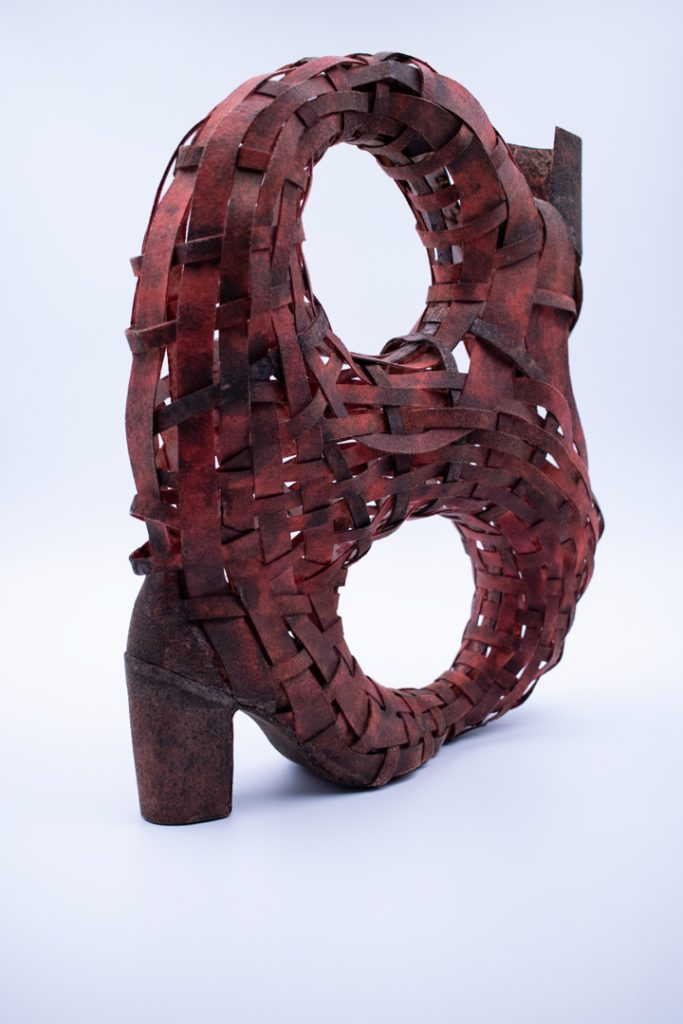When I started shaping this piece, I didn't set out to make a statement. I wasn’t thinking about symbolism or balance. I just wanted to express something I’ve felt for a long time—how unconditional love can look and feel when it stretches over time, without boundaries, and often, without return. This sculpture came out of that space. Two figures—one holding, the other resting. Quiet. Heavy. Endless.
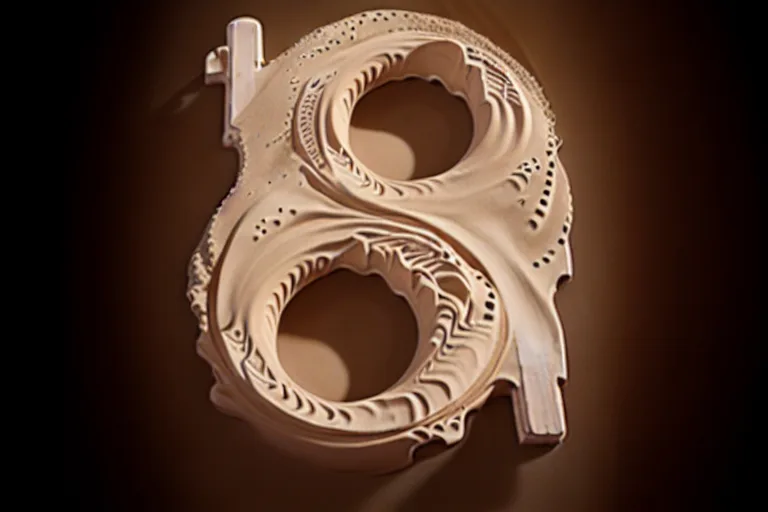
But the twist? It’s not leather this time. The material I used is a chemical non-woven canvas—a hidden layer from inside footwear, something no one ever sees or talks about. It’s there to reinforce, to support, but never to shine. Just like the figure carrying all the weight. That parallel felt perfect. That’s why I used it.
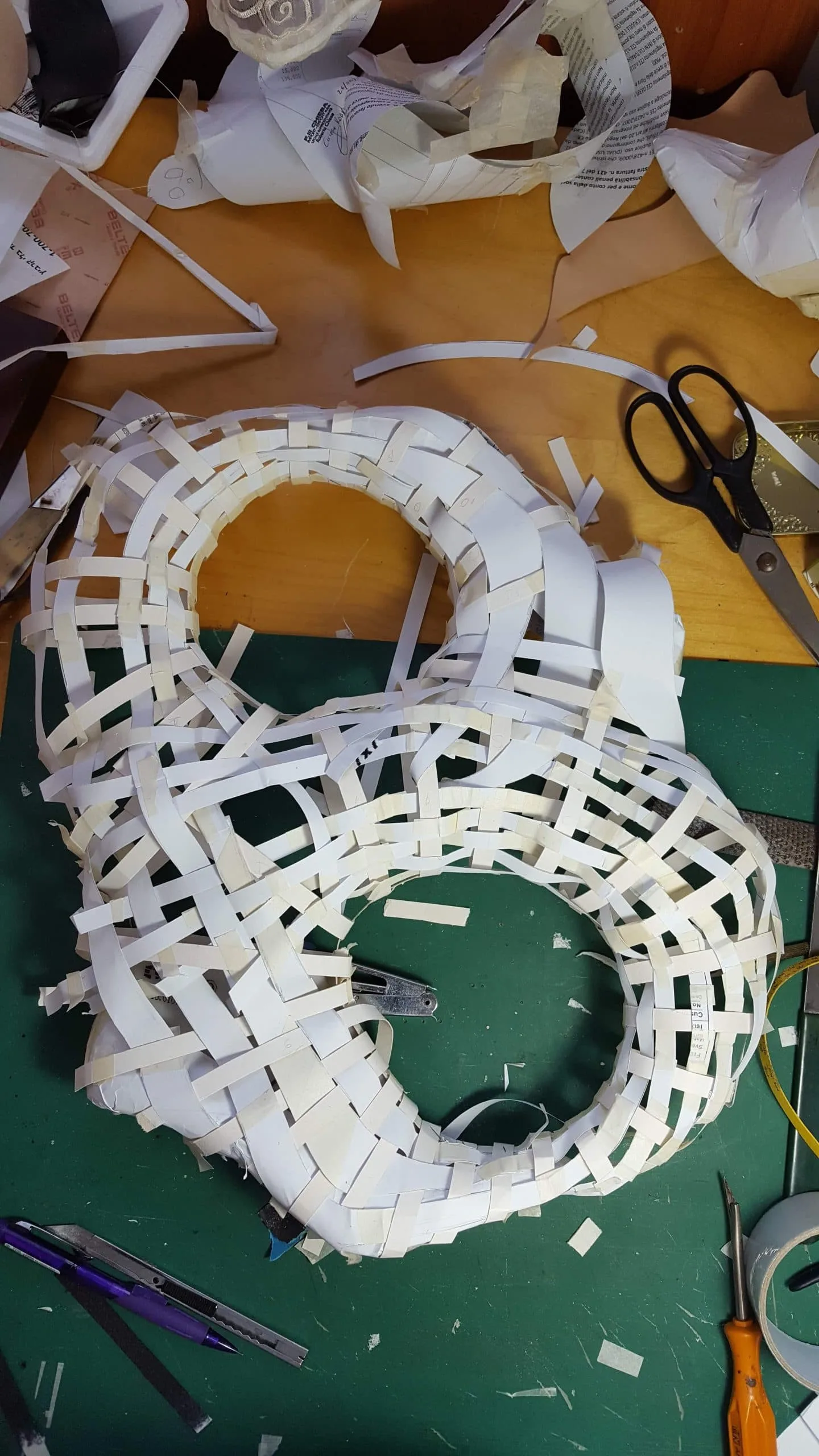
The Material Choice for Sculpture: Reinforcement as a Metaphor
In shoemaking, this canvas goes inside, between the lining and upper, to hold shape and structure. It’s never visible, never acknowledged, but it carries everything, and when I make bespoke women's shoes, I shape these parts meticulously to create a very accurate, delicate hidden part of footwear.
That’s what drew me to it. Using it in sculpture flipped the roles: the invisible became the form. This chemical canvas became the visual story, the message. It holds shape even when it’s stretched. It stiffens under pressure. It remembers tension.
It became the perfect metaphor for someone in a relationship who gives silently. Who carries the emotional load without ever asking to be seen? It becomes about endurance, about loyalty. About the everyday, invisible effort love can take.

Sculpture as Language: Letting Posture Speak
There’s something silent about the hero in this sculpture. He doesn’t speak. He doesn’t ask. He just holds. And over time, he erodes.
That’s the point. I wanted the stillness to scream. I wanted the imbalance to show itself in posture, not words. That’s the power of sculpture—it lets emotion exist without explanation. It doesn’t need language. It just stands there and is.
Each curve, each fold carries meaning. The figure holding the other one—he’s bent, his shape distorted under the weight. But he doesn’t break. That was important to me. I wanted his body to say what words don’t: "I’ll carry you, even if you don’t notice. Even if you never carry me back."
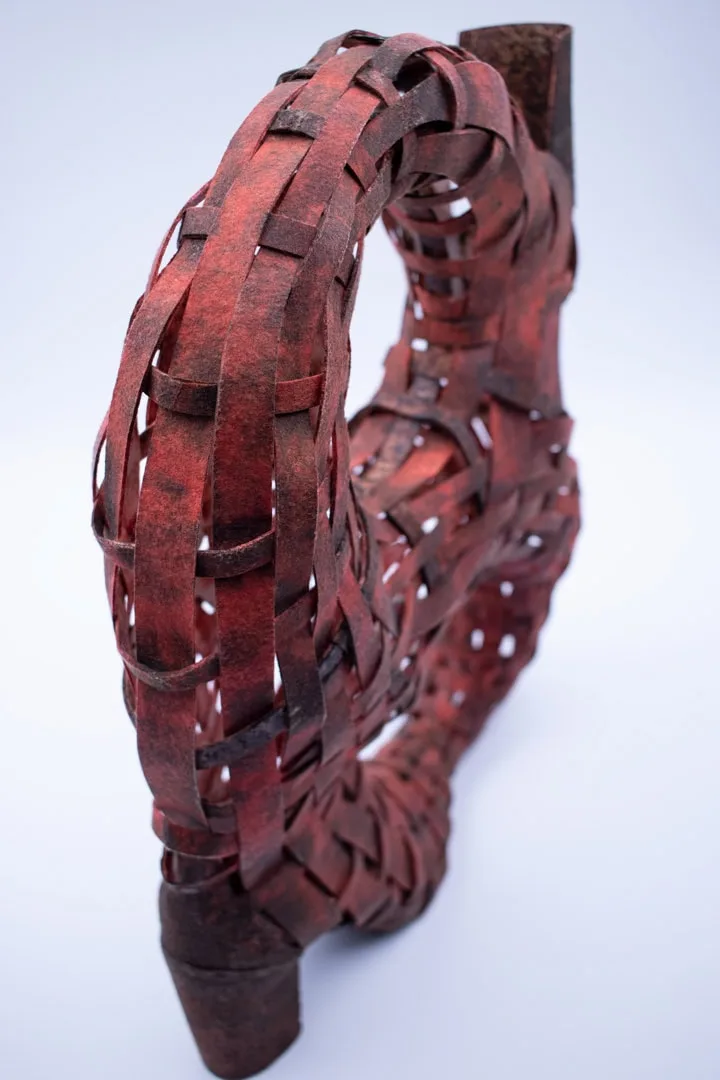
This Sculpture Is Personal
I’ve seen this dynamic in real life, over and over again. Between lovers, between parents and children, between friends. There’s always someone who gives more. Sometimes they know it. Sometimes they don’t. But they keep going. Maybe they believe things will change. Or maybe love itself is enough.
And I’ve been that person too. Giving without counting. It’s exhausting. But it’s also something I respect deeply. That kind of giving deserves its own monument. So I made one.
To me, that’s love at its purest and most painful. It’s not always fair. It’s not always balanced. And this piece isn’t about harmony—it’s about sacrifice, about the emotional weight one person carries for another. Not because they have to, but because they choose to.

Why Footwear Shapes? Why Not Human Bodies?
People often ask why I don’t make literal human forms. Why do the shapes echo footwear instead? But for me, footwear is where I started. It’s where my hands learned to shape and fold, to understand structure. It’s personal.
The forms in this piece mimic shoe silhouettes, because that’s what I know intimately. But here, those shapes aren’t just functional—they become expressive. They represent figures without actually being them. That abstraction allows emotion to be bigger, less confined.
Footwear also tells its own story of movement, of support, of wear and tear. It carries us, quite literally. It supports weight. It conforms and protects. Those metaphors layer into the sculpture.
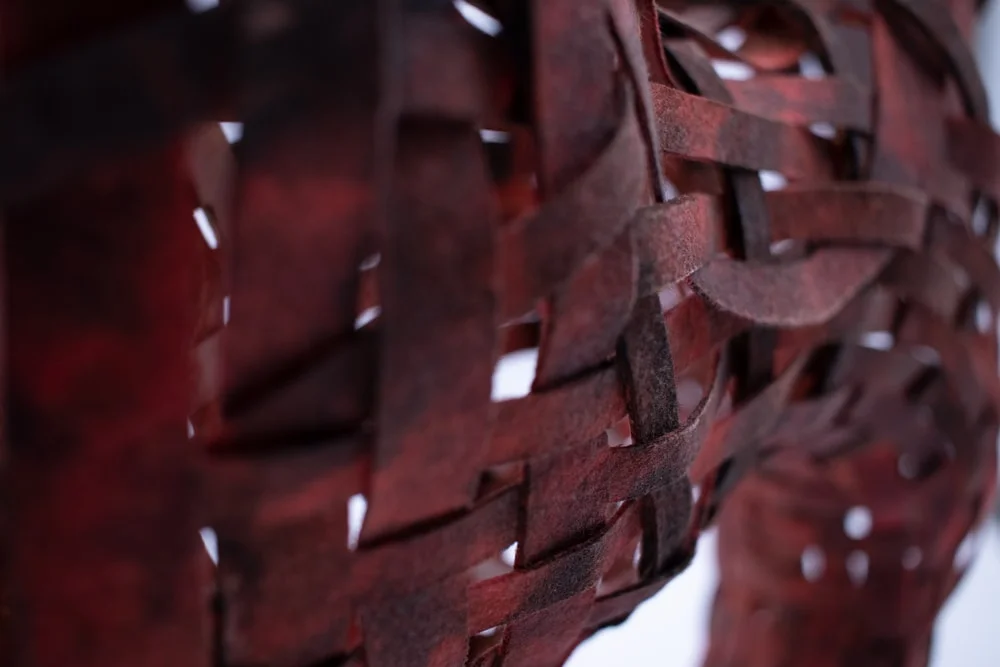
Modern Sculpture, Ancient Themes- ''Atlas''
I think of this work as modern sculpture, but the themes are as old as time: love, imbalance, giving, devotion. I used a modern material, shaped unconventionally, to talk about something universal.
That’s what modern art allows—to take raw ideas and make them tactile. This sculpture isn’t polished. It’s rough, woven, uneven. Just like relationships. Just like sacrifice. You can trace every fold and imagine the effort behind it.
There’s nothing sterile here. No clean lines. No perfect symmetry. That’s deliberate. I didn’t want it to look effortless. I wanted it to look earned.
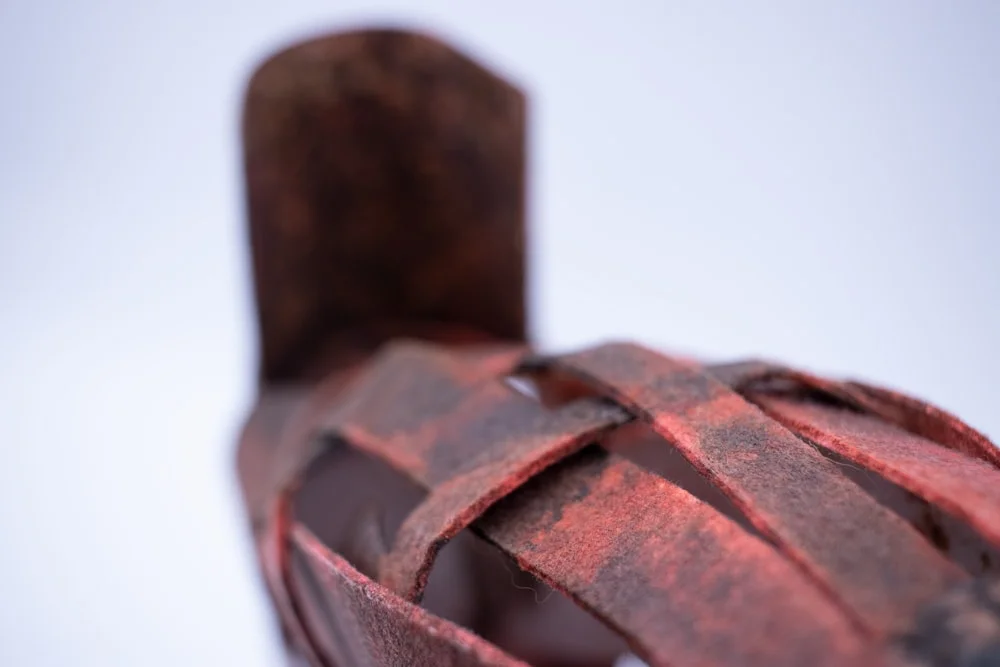
Leather Sculpture Without Leather
Even though I didn’t use leather this time, the idea of leather sculpture still influenced me. Leather is a material I love because it holds tension. It remembers. This canvas behaves differently, but I treated it with the same respect. I folded it, scarred it, bent it to my will—but only just. It resists. And in that resistance, something human appears.
In my other works, I use leather often. This one is a departure, but not a rejection. It’s an extension. The sculpture becomes a dialogue between what is seen and what is hidden, just like love.

What I Want You to See (Or Feel) in Art
If you see this sculpture in person, I don’t want you to think too hard about what it’s made of. Or even what the shapes represent. I want you to feel the imbalance. The weight. The quietness. The erosion.
Maybe it will remind you of someone you know. Maybe it will remind you of yourself. Maybe it will stir something you forgot you once gave to someone, freely. That’s enough. That’s the whole point.

Final Thoughts: Art as Witness
Modern art doesn’t always have to shock or confuse. Sometimes, it just needs to hold a mirror. This piece is that mirror. It reflects what we often don’t talk about—the quiet heroism of carrying someone else’s emotional weight. The invisible support. The parts of love no one sees.
This sculpture is a witness to that kind of love. The kind that bends but doesn’t break. That gets no thanks but keeps going. That stands still, holding, while the rest of the world moves on.
And in the end, maybe that’s what love is. Not balanced. Not even fairness. Just presence.
Just: "I’ll carry you. Still. Again. Always."

